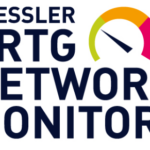
In today’s IT landscape, choosing the right network monitoring tool is crucial for ensuring optimal performance and security. With countless options on the market, it can be challenging to find the perfect fit for your organization. To help you make an informed decision, here’s our rundown of the top 5 network monitoring tools, including a detailed comparison of their features, strengths, and ideal use cases.
Network monitoring is the process of continuously observing, managing, and analyzing the performance, availability, and overall health of a network. It involves tracking devices, connections, and data flows to ensure seamless operations and identify potential issues such as downtime, bottlenecks, or security vulnerabilities. By using specialized tools, network administrators can proactively detect anomalies, receive alerts for critical events, and troubleshoot problems before they impact users. Effective network monitoring is essential for maintaining optimal network performance, ensuring reliability, and safeguarding organizational infrastructure from disruptions or threats.
Network monitoring software is essential for maintaining a secure, efficient, and reliable network. It enables you to proactively identify and resolve issues, such as downtime, performance bottlenecks, or unauthorized access, before they disrupt operations. By providing real-time visibility into your network’s devices, traffic, and performance, these tools help optimize resource allocation, improve troubleshooting efficiency, and enhance security. Additionally, network monitoring software can generate actionable insights and detailed reports, allowing IT teams to plan for future growth and ensure compliance with industry standards. Whether you manage a small business or a large enterprise, using network monitoring software ensures your network operates smoothly and supports your organizational goals.
We’ve reviewed the top five network monitoring software solutions that enable businesses to track, monitor and alert to issues. Here are the top five network monitoring software solutions:
UVexplorer takes the top spot on our list, offering a powerful and user-friendly solution for network mapping, monitoring, and asset management. What sets UVexplorer apart?
SolarWinds Network Performance Monitor (NPM) is a feature-packed tool designed for large enterprises.
ManageEngine OpManager is perfect for proactive monitoring across servers, devices, and applications.
Zabbix is a fully open-source network monitoring tool that offers high levels of customization.

PRTG rounds out our list with its robust features and flexibility for monitoring networks of any size.
Choosing the right network monitoring software is crucial for ensuring the health, performance, and security of your network. With a wide variety of tools available, it can be challenging to identify the features that truly matter for your organization. Here’s a guide to the key features to look for in network monitoring software to help you make an informed decision.
The ability to monitor your network in real-time is fundamental for proactive management. Look for software that provides:
Manual network discovery is time-consuming and error-prone. Choose a tool that can automatically scan and identify devices in your network:
Comprehensive performance metrics are essential for understanding the health of your network. Ensure the tool includes:
Your network monitoring software should integrate seamlessly with your existing IT ecosystem. Look for:
Networks evolve over time, and your monitoring software should grow with it. Ensure it offers:
Configuration management is vital for maintaining a stable network. Look for tools that allow you to:
An intuitive interface makes all the difference when navigating complex network data. Prioritize tools that feature:
Detailed reports and documentation are critical for IT planning and compliance. Look for tools that offer:
Investing in the right network monitoring software can save your organization time, money, and headaches. By prioritizing features like real-time monitoring, automatic discovery, performance analytics, and scalability, you can ensure your network remains reliable and secure. Tools like UVexplorer, which combine speed, usability, and comprehensive features, are excellent choices for modern IT environments.
Ready to optimize your network monitoring? Explore UVexplorer and experience the difference for yourself.
All Rights Reserved. UVnetworks © 2015 – 2025